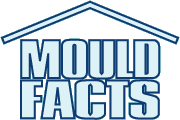How To Test For Mold In Your Home
Mold testing can be expensive. Before involving a professional, it is important to be sure you have a mold problem that requires professional help. Some preliminary tests that a home owner can cheaply perform include:
1. Sense Of Smell
If there is persistent "musty" or "earthy" smell it is possible that there is mold in the house. In this case you may want to call a professional to find out where the mold is located, the extent of mold contamination and the underlying cause.
2. Air Sampling
If people in the house are getting sick and you suspect mold as the cause, but you cannot see it or smell it, you can take air samples to test whether the air contains mold spores or fragments. The simplest way for a homeowner to take air samples is to order for a mold test kit which you can expose to the air in your home. The kit is then sent back to the laboratory for analyses. The problem with this type of mold test kits is that if the mold spores in your house are dead, the kit would not detect them, yet these dead spores could still cause allergic reactions to sensitive individuals.
To test for mold in your home regarless of whether the spores are dead or not, you would need an air sampling pump. The pump is expensive to buy, but you can rent one for a day for $50.00. The cost of renting the air sampler and the analysis of the air samples by a qualified laboratory would still be hundreds of times cheaper than calling a professional to test for mold that you don't even know if it existed. A qualified laboratory should be able to advise you on how and where to take samples.
3. Bulk and Surface Sampling
If you are concerned about visible mold, you can send a tape sample to a laboratory. You can also send pieces of material that show mold growth. The laboratory would identify the types of mold present and also provide information (where available) as to whether those types of mold are a health concern.
To order for a mold test kit, call 905-290-9101.
1. Sense Of Smell
If there is persistent "musty" or "earthy" smell it is possible that there is mold in the house. In this case you may want to call a professional to find out where the mold is located, the extent of mold contamination and the underlying cause.
2. Air Sampling
If people in the house are getting sick and you suspect mold as the cause, but you cannot see it or smell it, you can take air samples to test whether the air contains mold spores or fragments. The simplest way for a homeowner to take air samples is to order for a mold test kit which you can expose to the air in your home. The kit is then sent back to the laboratory for analyses. The problem with this type of mold test kits is that if the mold spores in your house are dead, the kit would not detect them, yet these dead spores could still cause allergic reactions to sensitive individuals.
To test for mold in your home regarless of whether the spores are dead or not, you would need an air sampling pump. The pump is expensive to buy, but you can rent one for a day for $50.00. The cost of renting the air sampler and the analysis of the air samples by a qualified laboratory would still be hundreds of times cheaper than calling a professional to test for mold that you don't even know if it existed. A qualified laboratory should be able to advise you on how and where to take samples.
3. Bulk and Surface Sampling
If you are concerned about visible mold, you can send a tape sample to a laboratory. You can also send pieces of material that show mold growth. The laboratory would identify the types of mold present and also provide information (where available) as to whether those types of mold are a health concern.
To order for a mold test kit, call 905-290-9101.


